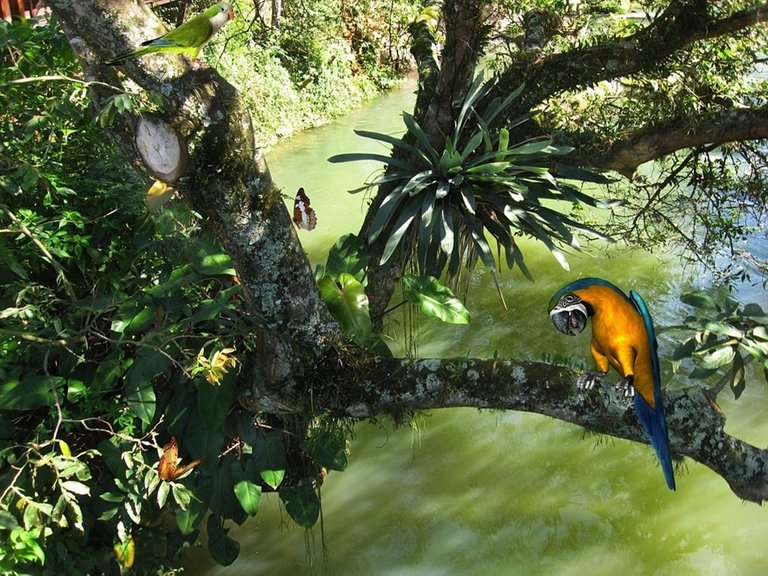
I was helping one of my children to make a school composition related to biodiversity, I thought about what is happening very close to us; a few kilometers away, the environmental devastation caused by mining exploitation. That is why I decided to create this publication to make known (once again) what happens to our biodiversity, the result of uncontrolled mining activity in southern Venezuela.
BIODIVERSITY
In the foreground we must remember that biodiversity is the immeasurable variety of life forms present on earth, including their habitats and the natural processes of which they are part. "The importance of our natural world is revealed in the thousands of different ways that Earth's organisms interact with each other, to contribute to the balance of the global ecosystem and the planet's survival. There is not a single life form that can live in isolation".
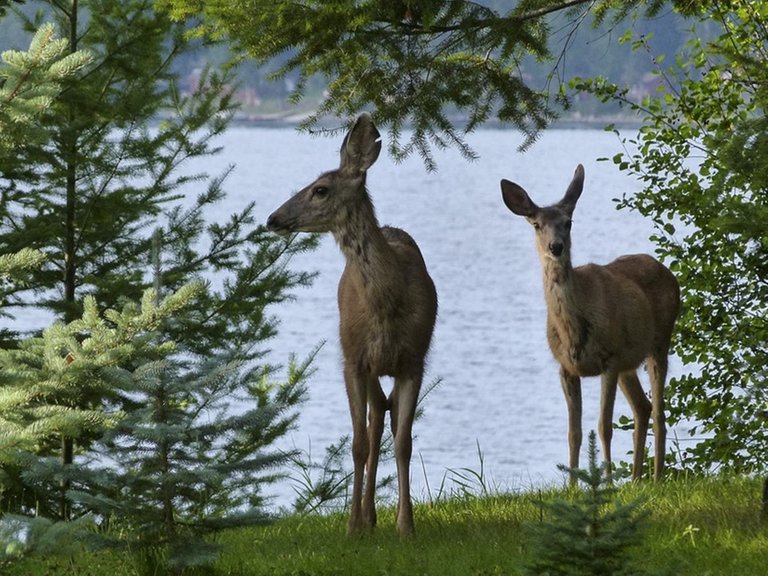
Source
"Wetlands filter out water pollutants; plants and trees reduce global warming by absorbing carbon, micro-organisms break down organic matter and fertilize the soil to provide food. Biodiversity helps pollinate flowers and crops and also provides food and medicine for our well-being. Without it we would not be able to survive".[1]
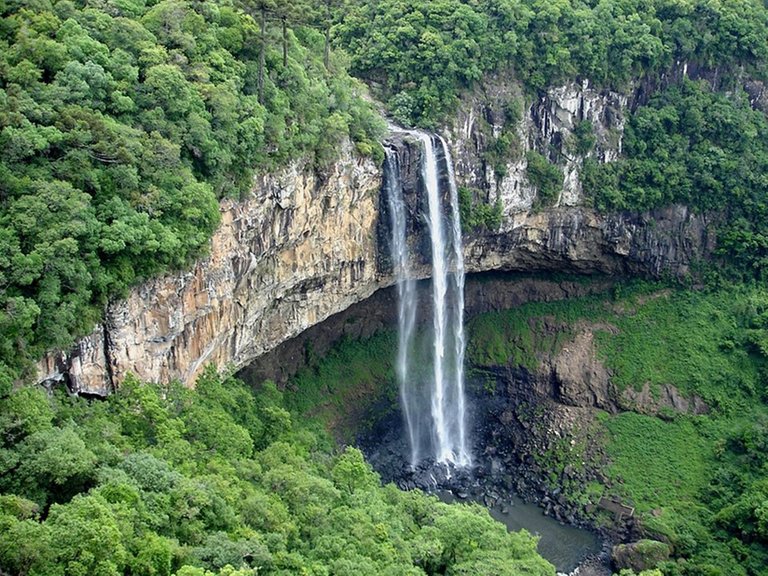
Source
VIEWPOINT
In that sense, rainforests and tropical forests are home to an immense number of living species (in some cases yet to be discovered), which have evolved over millions of years; helping to regulate the global climate by reducing the greenhouse effect, preventing erosion and protecting freshwater basins (among many other aspects), which makes their conservation vital.
Our position at the top of the animal pyramid due to the remarkable development of intelligence, reason and consciousness makes us mainly responsible, if not the only ones, predators of biodiversity. The most serious thing is that we are doing so at the expense of this vital balance that we have already mentioned.
PRIVILEGED NATURE
To the south of my beloved country is the Venezuelan Amazon, among ancient rocky mountains in the form of plateaus (tepuis), impressive waterfalls, winding and crystalline rivers; this vast expanse of land has a geological characteristic that favored the formation of abundant mineral deposits (including gold and diamond), in addition to "impressive levels of biological diversity: 2.600 species of vascular plants, 168 species of mammals, 475 birds, 34 amphibians, 53 reptiles and 441 fish species (identified to date) and stores more than 700 million tons of carbon, equivalent to the emissions of 162 million automobiles in one year. The region also hosts indigenous groups - including the Ye' kwana, Sanema and Hoti - that rely heavily on local rivers for drinking water, food and transportation. Being in one of the most isolated regions of the Amazon, these tribes still preserve their traditional way of life. [2]
For this reason, gold prospectors, commonly referred to as small miners (illegal, garimpeiros, etc.), threaten to destroy the home of a great biological diversity, including the indigenous tribes, working indiscriminately, without any type of socio-environmental control, to extract the mineral resources of economic value at a high cost; finally paid for by nature.
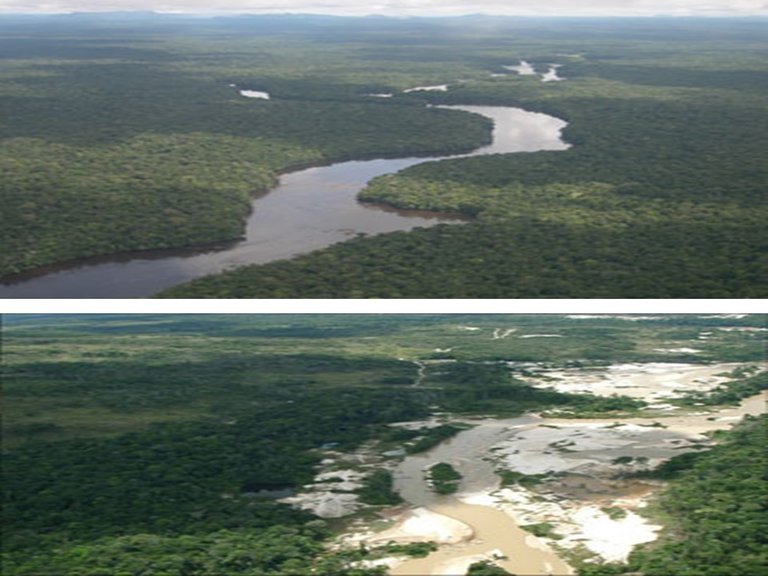
Source a
Source b
CONTAMINATION
The miners employ extraction techniques using the force of water from nearby water sources, which is discharged by high-powered hoses and motors, removing all the vegetable bedding and underlying sediments to gravel deposits with the potential to contain gold (colloquially called "material"). Gold is usually mined from this gravel using an artisanal "washing machine" that separates the heavier sediments (with gold) using mercury ("azogue"), thus amalgamating the precious metal. Although most of the mercury is removed for reuse, a small portion is burned to obtain the metallic ore, while the remaining portion inexorably ends up in rivers.
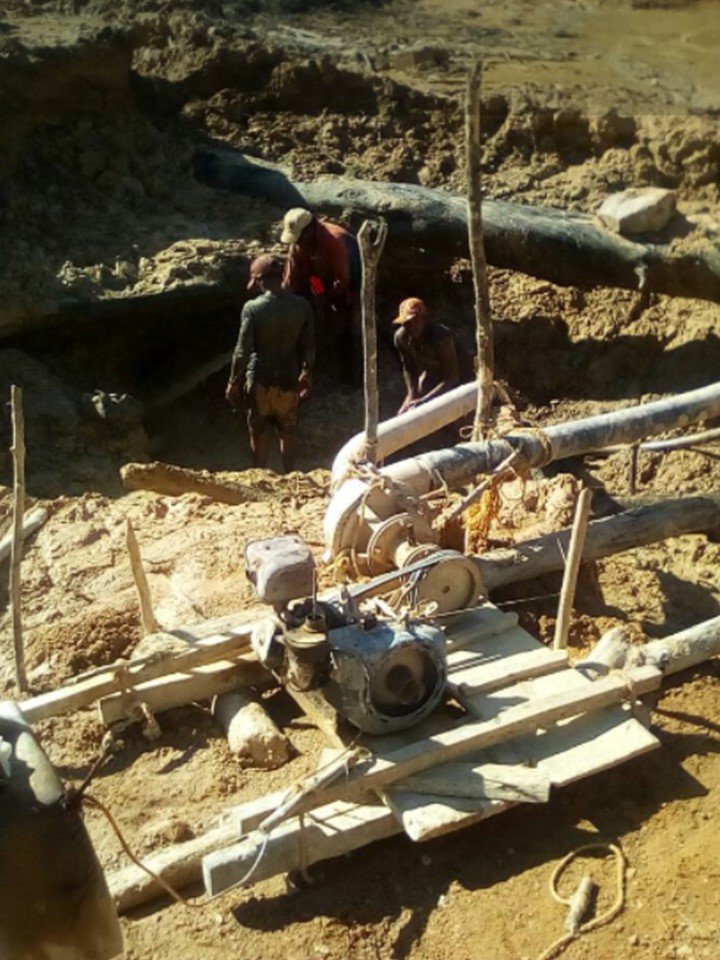
Source: @guaica99
The main problem with this type of gold mining is that it has virtually no management or control at all, as a result of which operators inhale mercury vapor, the airborne vapour is dried and deposited through many areas and liquid mercury reaches the aquatic environment. Once there, it is methylated and ingested by benthic organisms, which in turn are devoured by predatory fish, and thus continues to ascend the food chain.
The bioaccumulation of mercury in fish poses a threat to the health of people living downstream. Fish represents the largest source of protein in the diet of local residents, resulting in well-documented accumulation, particularly in children. The effects of mercury on humans are well known. Its buildup in the body has been associated with neurological damage and birth defects.
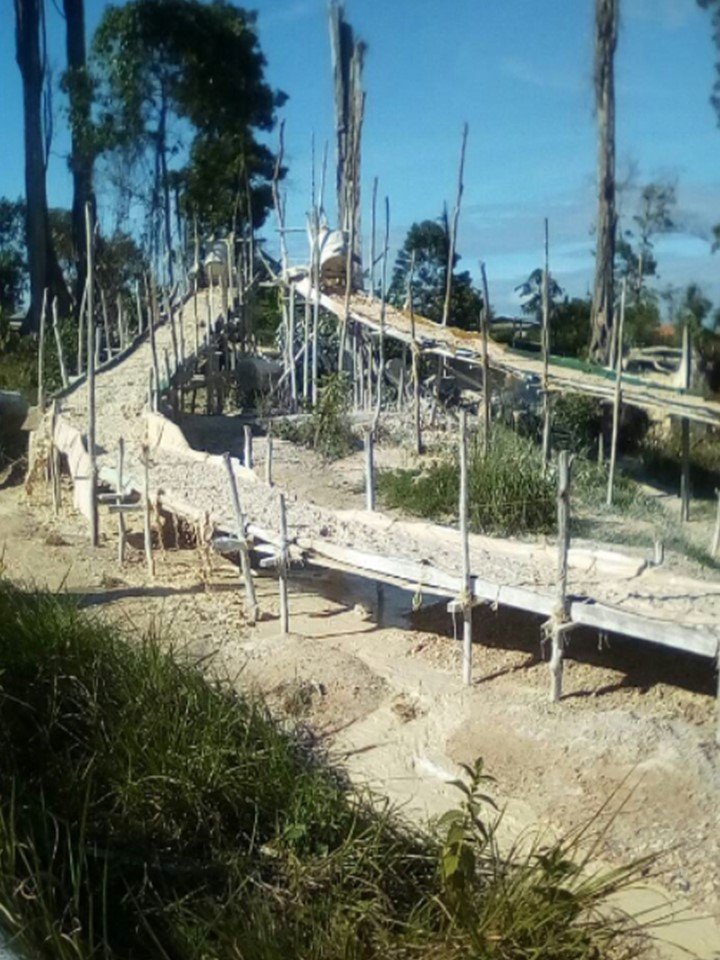
Source: @guaica99
In addition, poorly managed mining camps create ideal conditions for mosquito breeding, making these sites a focal point for vector-borne disease infection. These diseases (malaria and dengue) spread further as miners without medical treatment return to their communities and families. [3]
Riverbed (images c and d) upstream and downstream, respectively, of a mining activity focus. The second photo shows a cloudy appearance due to the sediments it carries:

Source c
Source d
The additional indiscriminate mining activity causes the resulting sediments to harm navigation in rivers and pose risks to hydroelectric processes as they are contained in the dams.
INDISCRIMINATED HUNTING
The area has suffered a rebound in the indiscriminate hunting of all wildlife species, by irregular and miners who hunt everything that moves. The most affected species are mammals such as tapir, cuspón or giant cachicamo, wild pigs (báquiros), macaws, deer and all species known locally as "hunting meat".
It is a very critical situation given that indigenous people have also joined in the hunting of wildlife to sell prey to miners or the establishments that supply them (...) the commercialization of these species, further diminishes their already depleted populations. [4]
In this sense, the pressure on all biodiversity in the region is being exerted on two sides in parallel: on the one hand, the advance and intensification of illegal mining, destroys and fragments the ecosystems and habitat of local fauna and, on the other hand, there is increasingly more poaching throughout the region and fewer places for animals to hide or reproduce.
As can be seen in the graph, hunters sell a Giant Cuspón or Cachicamo Gigante in the area of Icabarú. It is a species of fragile biology, scarce by nature, with low reproductive capacity and highly specialized habits. It is documented and classified as Endangered, registered in the Red Book of Venezuelan Fauna, which indicates that this species is considered to be facing a very high risk of extinction in wildlife.
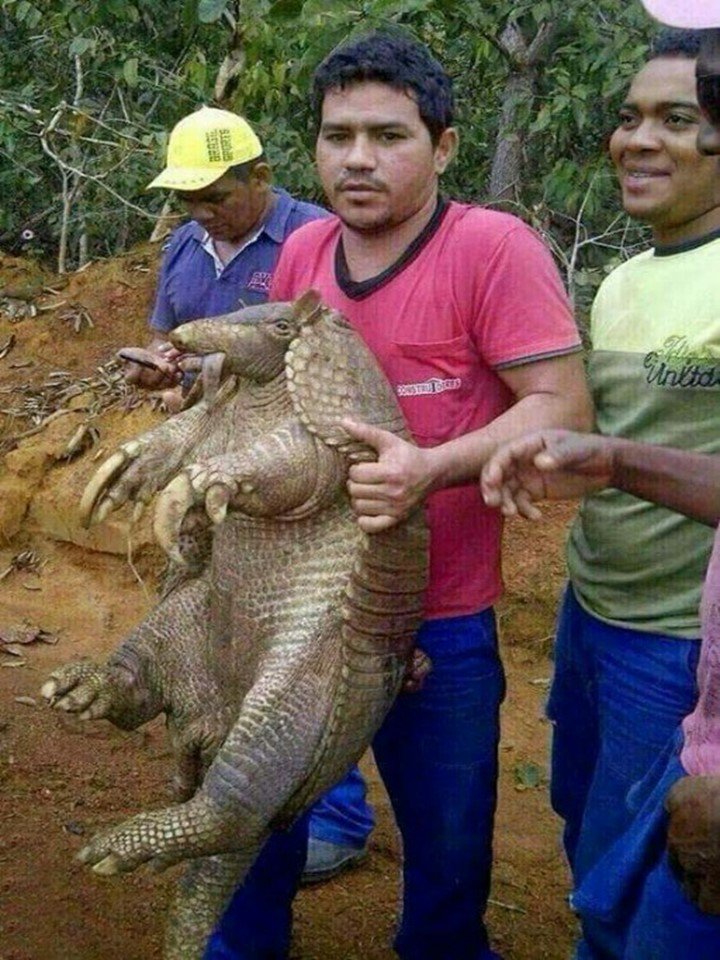
Source
ACTIONS
Although in Venezuela a large part of these areas are protected (theoretically) as Special Administrative Areas (ABRAE), in reality natural parks are being invaded by irregular settlements, clandestine airstrips and disorderly mining operations. Fundamentally, the Authorities must enforce existing laws for the protection of ecosystems and their biodiversity and conserve the indigenous groups currently threatened.
It is also important to strengthen monitoring by government agencies in watersheds by involving local indigenous peoples in this effort.
And the most important thing is the education, in all areas, of the generations that rise up, to raise the level of awareness of this problem.
This servant does with his children what is necessary so that the seed of the preservation of our beautiful planet is sown fertile in their young minds to ensure a flourishing future, in harmony with the environment and full. We must all be multipliers of this message!
What do you think about it?
I hope my post will be useful and look forward to your comments at @guaica99
References:
Source 1
Source 2
Appointments[3]: Hammond, D. S. (ed). 2005. [Guyana Shield Tropical Forests]. Tropical Forests of the Guiana Shield. Ancient forests in a modern world. CABI Publishing, Wallingford, UK. 528 pp.
Source 4
Translated from Spanish with the help of Deepl (www.DeepL.com/Translator)
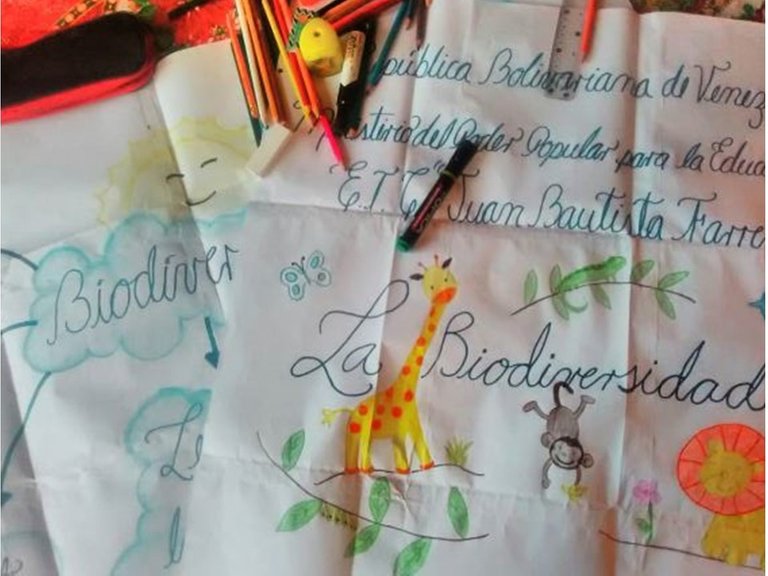
Muy completo reportaje de verdad tenemos el mejor país debemos cuidarlo y amarlo
Asi es, es muy importante cuidar la biodiversidad para preservar nuestra propia existencia. Gracias por visitar mi post. Saludos.
De verdad una realidad en nuestro país que está acabando con zonas privilegiadas de nuestros parques nacionales y reservas de flora y fauna por la explotación indiscriminada de la minería. Ojalá se tome conciencia. Excelente post saludos.
Gracias. Así es, nos urge tomar medidas al respecto.
Muy importante el aporte de cada uno de nosotros para un país y tierra mejor, excelente post.
Siempre he dicho que todo parte de crear mayor nivel de conciencia. Gracias por visitar mi publicación. Saludos.